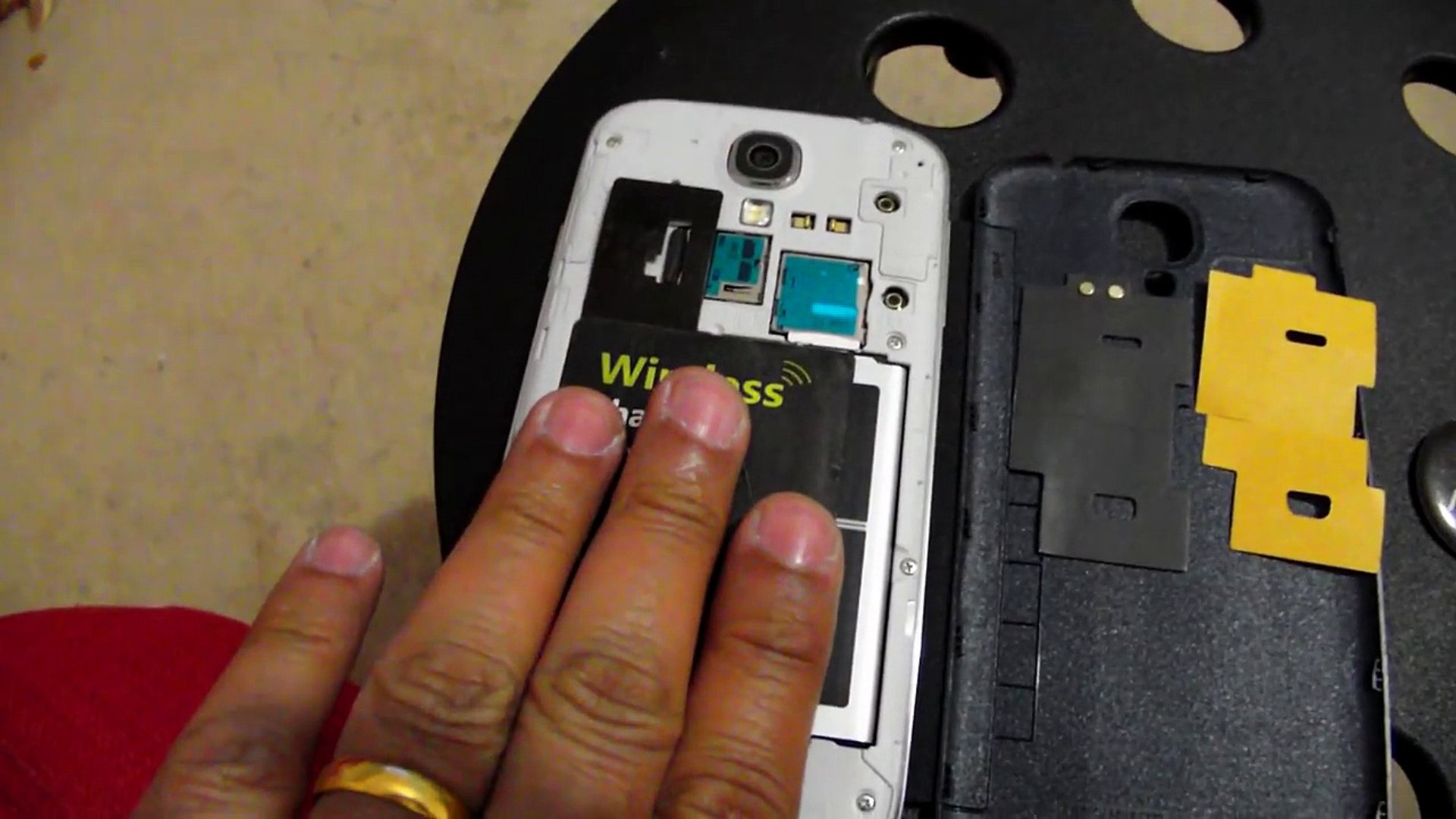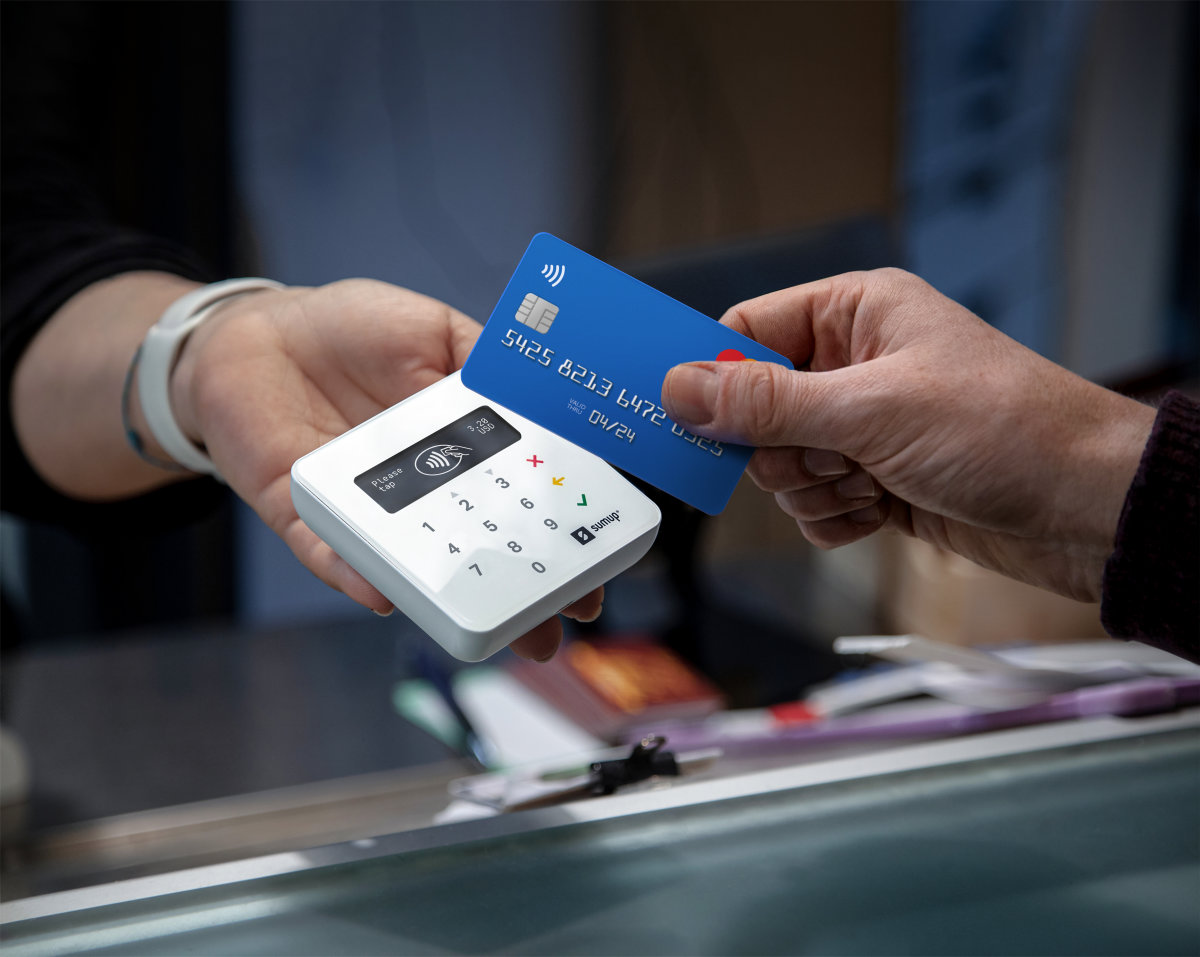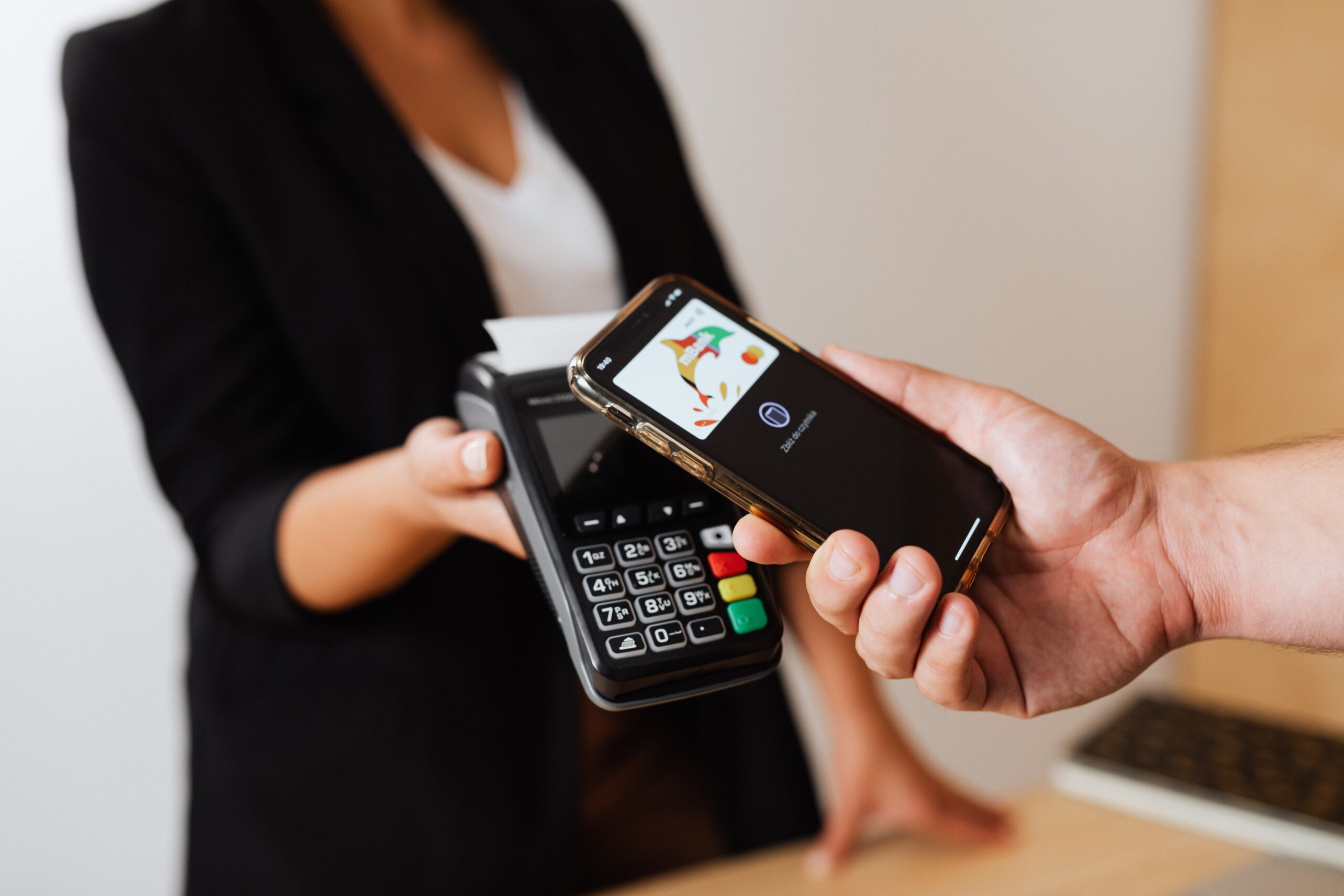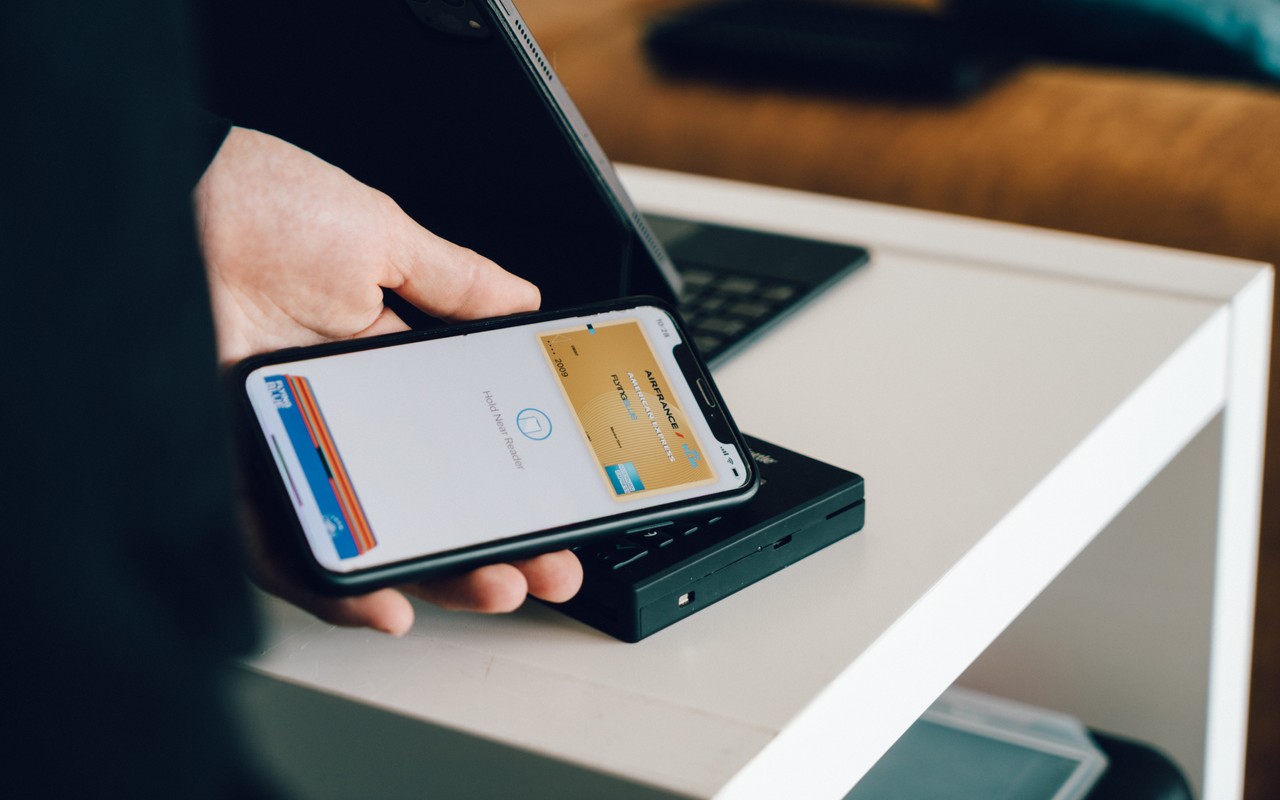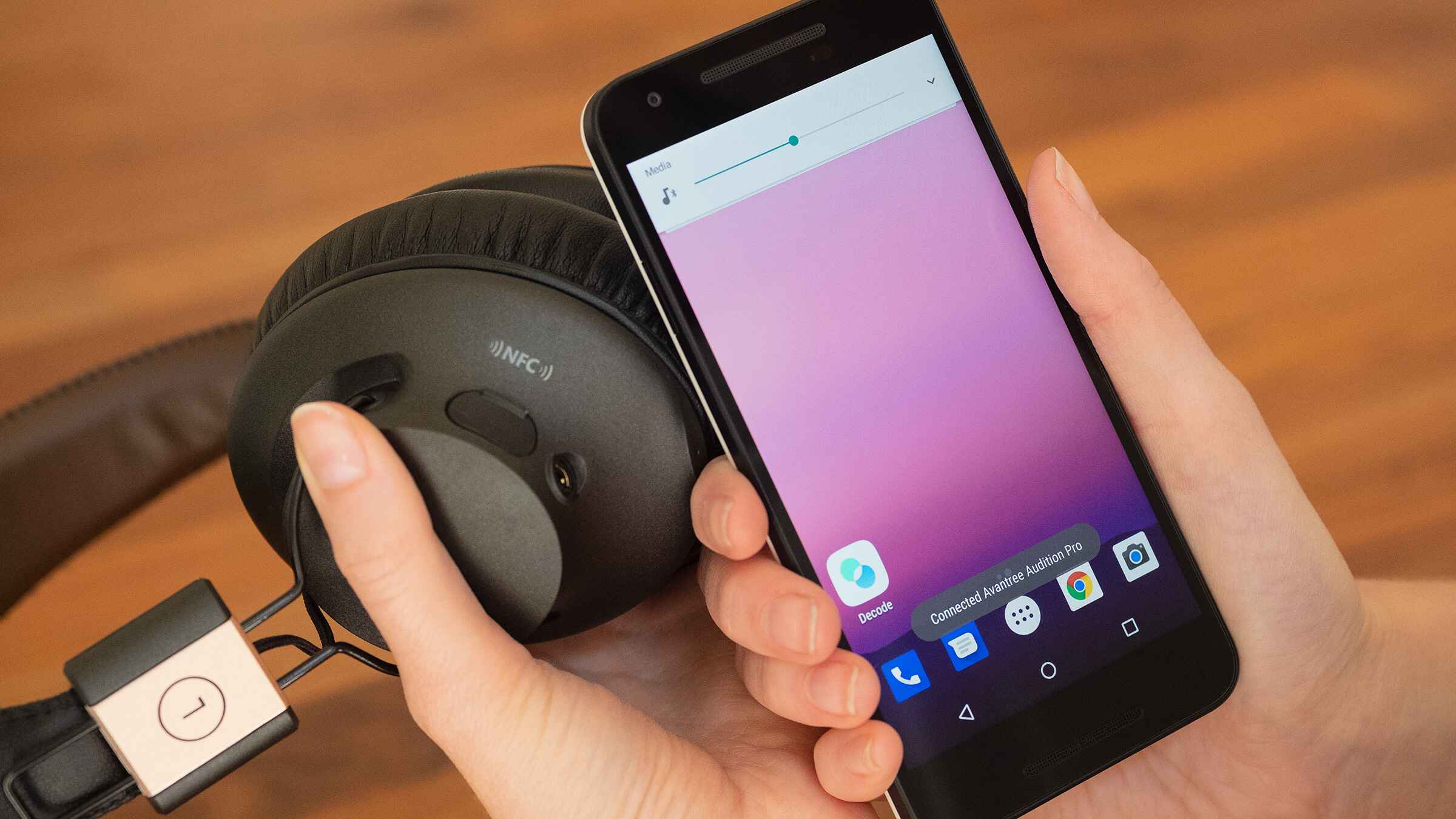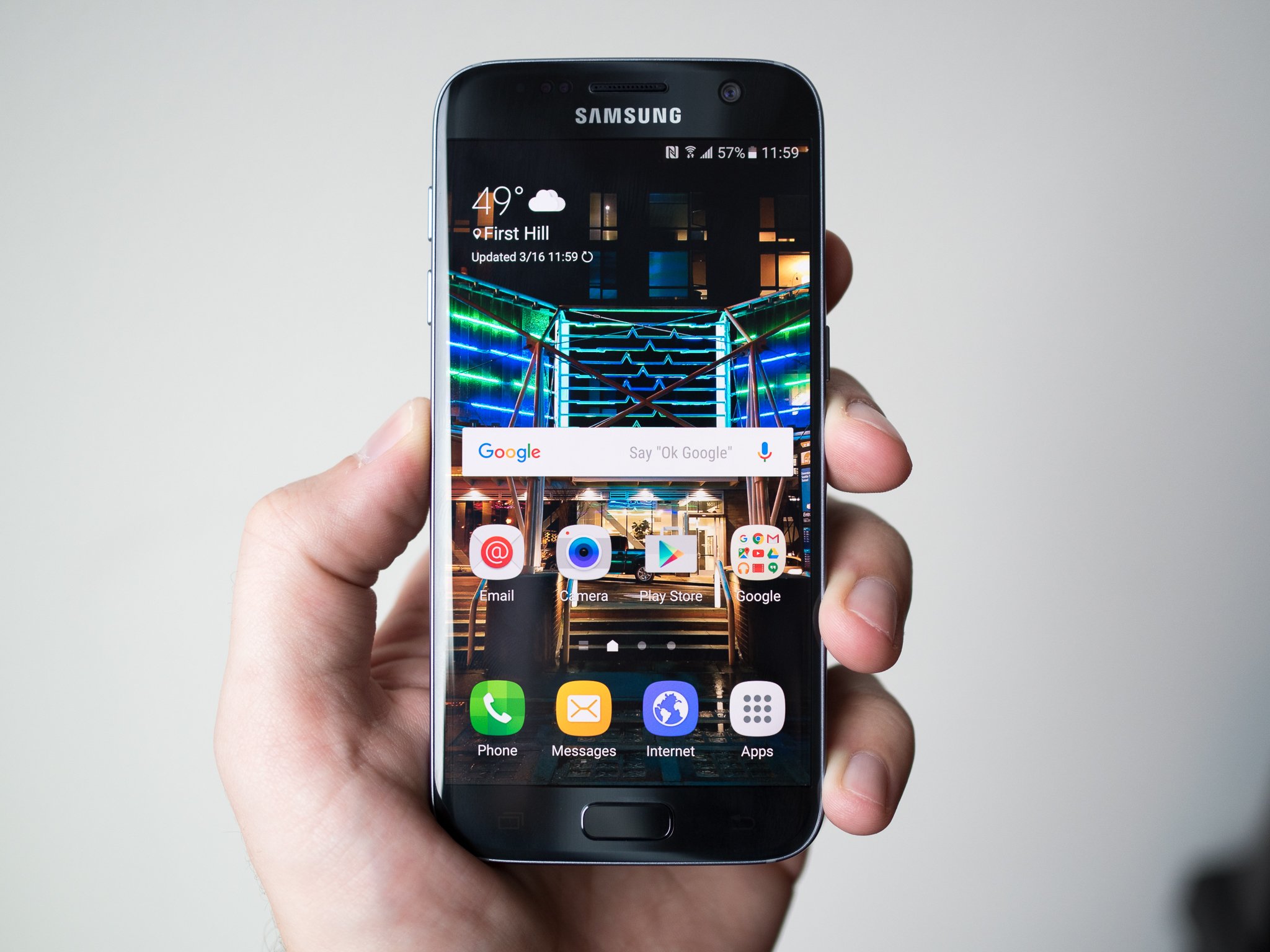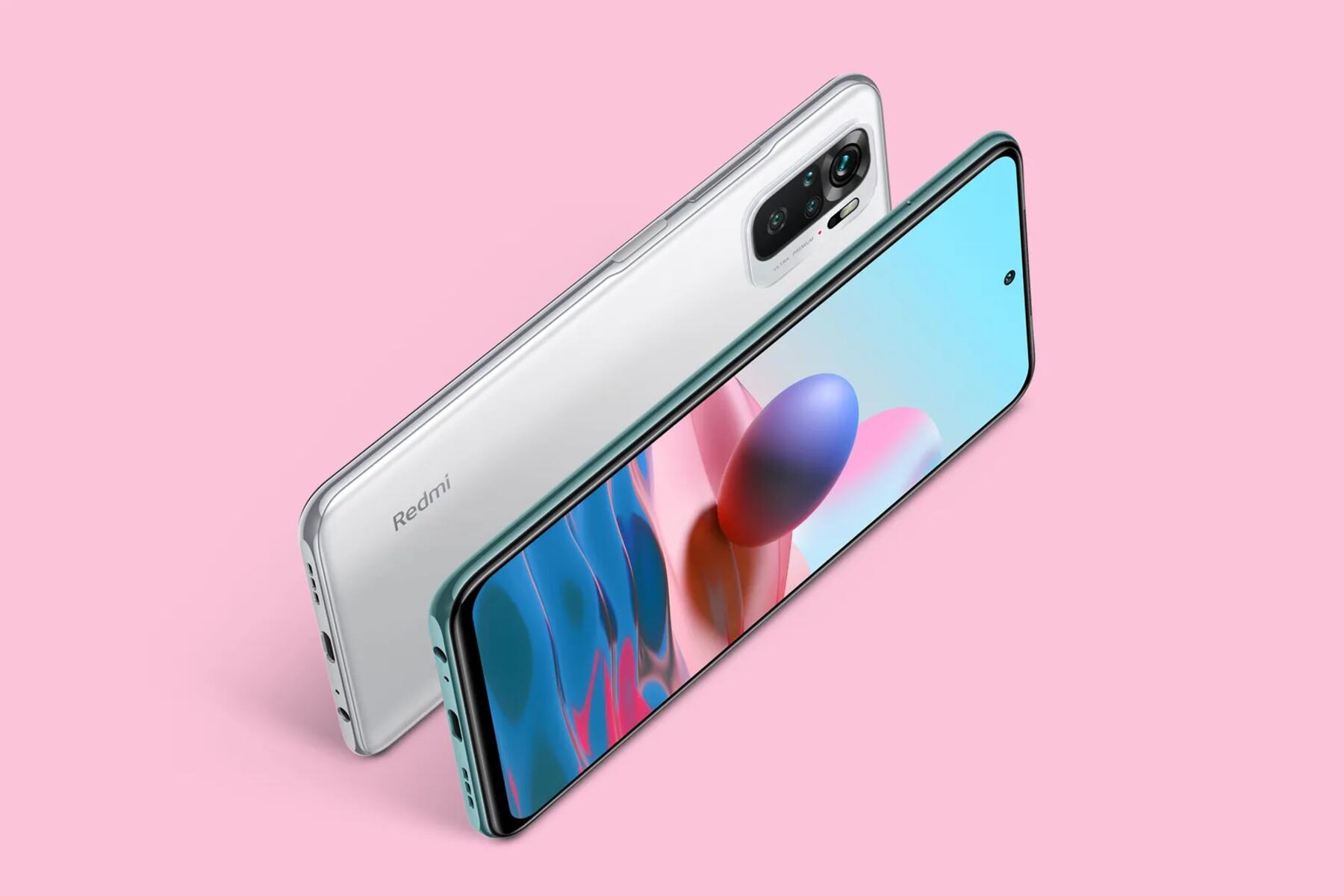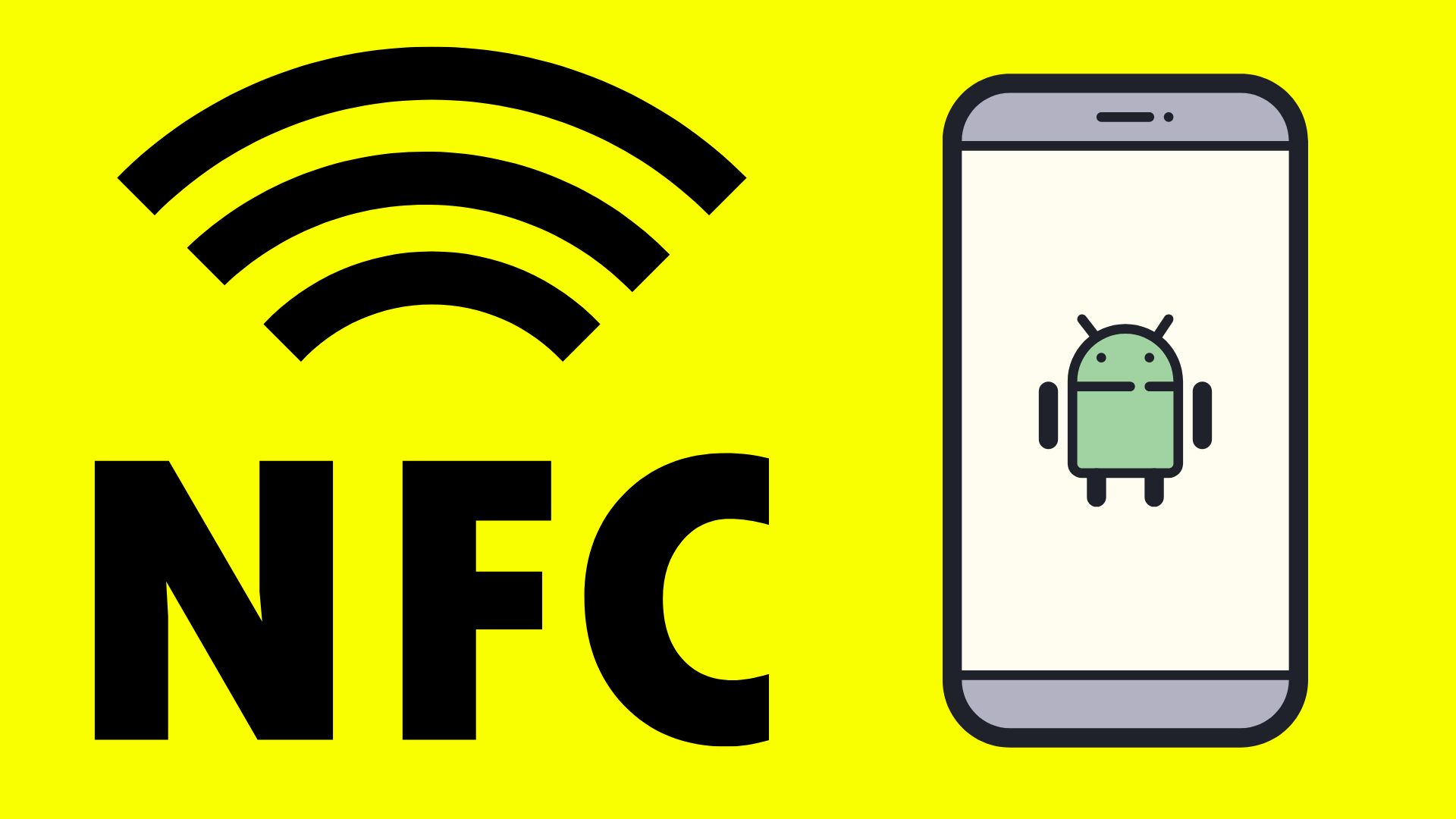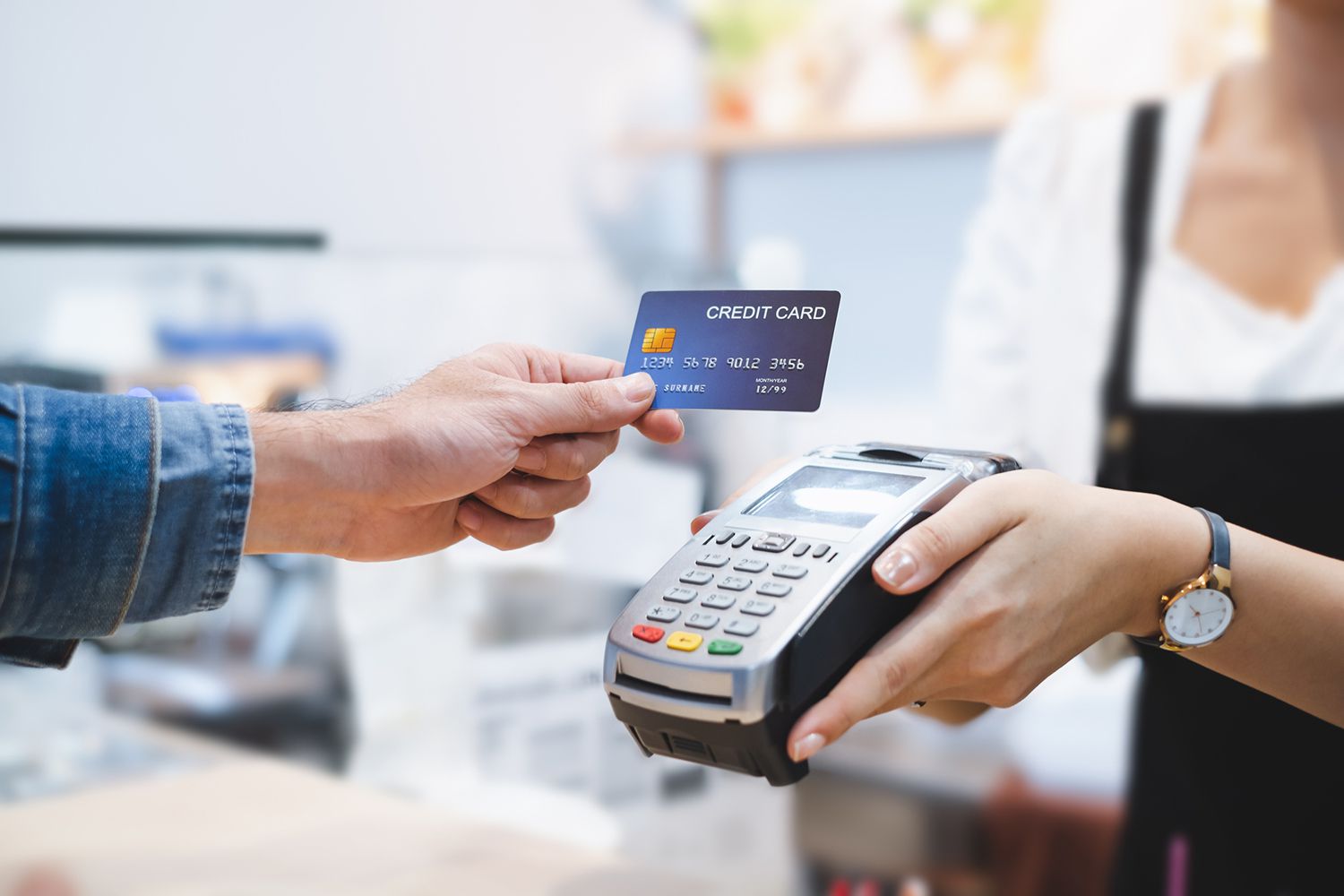Introduction
Near Field Communication (NFC) contactless payments have revolutionized the way we make transactions in the modern world. With just a simple tap of our smartphones or contactless cards, we can now make secure and convenient payments for goods and services. NFC technology has paved the way for a seamless and effortless payment experience, eliminating the need for physical cash or traditional payment methods.
NFC is a short-range wireless communication technology that allows devices in close proximity to exchange data. It works by using electromagnetic fields to establish a connection between the payment device, such as a smartphone or a contactless card, and the payment terminal. This secure and efficient method of payment has gained immense popularity, transforming the way we shop, dine, and even commute.
One of the key benefits of NFC contactless payments is the speed and convenience it offers. Gone are the days of fumbling for loose change or waiting in long queues to complete a transaction. With NFC, consumers can simply tap their devices on the payment terminal, and the payment is processed within seconds. This not only saves time but also enhances the overall shopping experience.
Furthermore, NFC technology eliminates the need for physical contact or swiping, reducing the risk of theft or fraudulent activities. The data exchanged between the devices is encrypted, ensuring that sensitive information, such as credit card details, remains secure. Additionally, NFC payments often require authentication methods, such as fingerprint or facial recognition, adding an extra layer of security.
Several popular NFC payment services have emerged in recent years, offering users a wide range of options. Companies like Apple Pay, Google Pay, and Samsung Pay have developed their own mobile payment platforms, allowing users to link their bank accounts or credit cards to their smartphones and make secure NFC transactions. These services are widely accepted across various merchants, making NFC payments accessible to a large user base.
In the next section, we will delve deeper into the security aspects of NFC contactless payments and address any concerns regarding the safety of this technology. We will also guide you through the process of setting up NFC payments on your device and explore how to use NFC for various transactions. With the continuous advancements in technology, NFC contactless payments are undoubtedly the future of cashless transactions, making traditional wallets and physical cards a thing of the past.
How NFC Works
At its core, NFC technology relies on electromagnetic waves and radio frequency to establish a connection between two devices: the payment device and the payment terminal. It operates within a short range of approximately 4 centimeters, making it ideal for quick and convenient transactions.
NFC-enabled devices, such as smartphones or contactless cards, contain a small microchip called an NFC chip. This chip acts as the transmitter and receiver of data. When the payment device is placed near an NFC-enabled payment terminal, the NFC chip initiates communication by creating a small electromagnetic field.
The payment terminal, equipped with its own NFC chip, detects and responds to this field by establishing a connection with the payment device. Once the connection is established, both devices exchange data through a process known as data modulation. This data can include payment information, loyalty cards, or even digital tickets.
NFC technology operates in two modes: active and passive. In active mode, both the payment device and the payment terminal generate their own electromagnetic fields, allowing the devices to communicate bidirectionally. This mode is commonly used for peer-to-peer sharing or file transfers between NFC-enabled devices.
On the other hand, passive mode is used for NFC contactless payments. In this mode, the payment device acts as the active initiator while the payment terminal acts as the passive responder. This one-way communication ensures that the payment information is securely transmitted from the payment device to the terminal.
NFC technology supports different types of communication protocols, including ISO/IEC 14443 and ISO/IEC 18092. These protocols govern the way data is transmitted and decoded between NFC devices, ensuring compatibility and standardization across different manufacturers and payment platforms.
It is important to note that NFC technology requires close proximity between the payment device and the payment terminal to establish a connection. This proximity requirement adds an extra layer of security, as potential hackers would need to physically be near the devices to intercept the data exchange.
As NFC technology continues to evolve, we can expect to see advancements such as enhanced security features, increased range, and improved compatibility between devices. This will further expand the use cases of NFC beyond just contactless payments, opening up opportunities for seamless interactions in various industries, including transportation, healthcare, and access control.
In the following sections, we will explore the benefits of NFC contactless payments, popular NFC payment services, and the security measures in place to protect users during transactions.
Benefits of NFC Contactless Payments
NFC contactless payments offer a plethora of benefits that have revolutionized the way we make transactions in our daily lives. Let’s explore some of the key advantages of this technology:
1. Convenience: NFC contactless payments provide a seamless and convenient payment experience. With just a simple tap of your smartphone or contactless card, you can make purchases quickly and efficiently. This eliminates the need to carry physical cash or search for loose change, saving you time and hassle.
2. Speed: NFC transactions are incredibly fast. The payment process is completed within seconds, allowing you to breeze through checkout lines without any delays. This is especially beneficial in busy environments such as crowded stores or transportation hubs.
3. Enhanced Security: NFC contactless payments prioritize security. The technology uses encryption and authentication methods to protect your payment information. Additionally, since the transaction is contactless, the risk of physical theft or card skimming is significantly reduced.
4. Wide Acceptance: NFC payments have gained widespread acceptance across various merchants, making it easier to use this technology for your everyday purchases. Whether it’s your favorite coffee shop, grocery store, or even public transportation, chances are you can use NFC contactless payments to make transactions.
5. Contactless Interaction: NFC technology allows for contactless interaction beyond payments. You can use NFC-enabled devices to share contact information, exchange files, or even access secure areas. As more industries embrace NFC, the possibilities for seamless and convenient interactions are expanding.
6. Loyalty and Rewards Integration: NFC contactless payments can seamlessly integrate loyalty programs and rewards systems. By linking your loyalty card information to your payment device, you can earn and redeem rewards effortlessly during your transactions, enhancing your overall shopping experience.
7. Environmentally Friendly: NFC contactless payments contribute to a more sustainable future by reducing the reliance on physical cash and paper receipts. This helps to minimize the carbon footprint associated with the production, transportation, and disposal of cash and paper products.
As NFC technology continues to evolve and gain traction, we can expect additional benefits to emerge. These may include personalized offers, targeted advertisements, and even more seamless integration with other IoT devices.
In the next section, we will explore some popular NFC payment services that have made NFC contactless payments widely accessible to users worldwide.
Popular NFC Payment Services
The popularity of NFC contactless payments has led to the emergence of several widely used payment services that leverage this technology. Let’s take a look at some of the most popular NFC payment services available today:
1. Apple Pay: Apple Pay is a mobile payment service offered by Apple. It allows users to make NFC contactless payments using their iPhones, iPads, Apple Watches, and even Mac computers. By securely storing your payment information in a virtual wallet, Apple Pay enables you to make purchases with a simple touch or glance using biometric authentication.
2. Google Pay: Google Pay, developed by Google, is another popular NFC payment service available on Android devices. It provides a convenient way to make payments using your smartphone or wearable devices. Google Pay supports NFC transactions and also integrates loyalty cards, boarding passes, and tickets for a seamless payment and digital experience.
3. Samsung Pay: Samsung Pay is a mobile payment solution offered by Samsung that supports NFC payments as well as magnetic secure transmission (MST) technology. This unique feature enables Samsung Pay to work with traditional card readers, allowing users to make payments even at terminals that do not support NFC. Samsung Pay is compatible with a wide range of Samsung devices, including smartphones, smartwatches, and tablets.
4. Fitbit Pay: Fitbit Pay is a payment service integrated into Fitbit smartwatches, allowing users to make NFC contactless payments directly from their wrist. It offers a convenient and secure method of payment for fitness enthusiasts who want to leave their wallets at home during workouts or runs.
5. Garmin Pay: Garmin Pay is a payment service available on selected Garmin smartwatches. It allows users to add their payment cards to their compatible devices and make NFC contactless payments on the go. With Garmin Pay, you can easily make purchases while enjoying activities like running, cycling, or exploring the outdoors.
These popular NFC payment services have gained widespread acceptance among merchants across various countries, making NFC contactless payments accessible to millions of users worldwide. It’s important to note that the availability of these services may vary depending on your country and the supported devices.
In the next section, we will discuss the security measures implemented in NFC contactless payments to ensure the safety of your transactions.
Security of NFC Contactless Payments
Security is a top priority when it comes to NFC contactless payments. To ensure the safety of transactions, several robust security measures are implemented in NFC technology, providing users with peace of mind. Let’s explore some of the key security aspects of NFC contactless payments:
1. Encryption: NFC contactless payments use encryption to protect the sensitive data transmitted between the payment device and the terminal. The NFC communication is encrypted, making it difficult for unauthorized parties to intercept and decipher the data exchanged during a transaction. This ensures that your payment information, such as credit card details, remains secure.
2. Authentication: NFC payments often require additional authentication methods to verify the legitimacy of the transaction. Biometric authentication, such as fingerprint scanning or facial recognition, provides an extra layer of security. This ensures that only the authorized user can make payments using their NFC-enabled device, minimizing the risk of fraudulent transactions.
3. Tokenization: Tokenization is a security feature used in NFC contactless payments. Instead of transmitting the actual card details, a unique token is generated for each transaction. This token acts as a substitute for the card information, reducing the risk of sensitive data being stolen or compromised. Even if a token is intercepted, it cannot be converted back into the original card information.
4. Proximity Requirement: NFC technology requires close proximity between the payment device and the payment terminal for a transaction to occur. This proximity requirement adds an additional layer of security, as potential attackers would need to physically be near the devices to intercept the data exchange. The short range of NFC communication makes it difficult for unauthorized parties to eavesdrop on the transaction.
5. User Control: NFC contactless payments give users control over their payment devices. Users can enable or disable the NFC functionality on their devices, providing them with the flexibility to manage their payment preferences. Additionally, users can also set up additional security features, such as device locks or biometric authentication, to enhance the security of their NFC payment method.
It’s worth noting that the security of NFC payments is continuously evolving to stay ahead of potential threats. Industry standards and regulations are put in place to ensure that devices, payment platforms, and merchants meet strict security requirements. Regular security updates and patches are released to address any vulnerabilities that may arise.
By implementing these security measures, NFC contactless payments provide a secure and reliable method of making transactions. However, it is always important for users to take precautions, such as keeping their devices updated, using strong passwords or biometric authentication, and promptly reporting any suspicious transactions to their financial institutions.
In the next section, we will guide you through the process of setting up NFC payments on your device and explore how to use NFC for various transactions.
Setting Up NFC Payments
Setting up NFC payments on your device is a straightforward process that varies slightly depending on the operating system and payment service you are using. Here are the general steps to get started with NFC payments:
1. Check Device Compatibility: Ensure that your smartphone or wearable device is NFC-enabled. Most modern smartphones and smartwatches support NFC functionality, but it’s essential to verify this before proceeding.
2. Choose an NFC Payment Service: Decide which NFC payment service you want to use based on your device compatibility and personal preference. Popular services include Apple Pay, Google Pay, and Samsung Pay. Download the respective app from your device’s app store.
3. Add Payment Methods: Open the NFC payment app you have chosen and follow the prompts to add your payment methods. This typically involves scanning your physical payment card or manually entering your card details. Some apps may require you to link your bank account for transactions.
4. Verify and Authenticate: Once you have added your payment methods, you may be required to verify your card or account. This may involve authentication using an SMS code, email confirmation, or contacting your card issuer. Some apps utilize biometric authentication, such as fingerprint or facial recognition, for added security.
5. Set a Default Card: If you have added multiple payment methods, you can choose a default card for NFC transactions. This is the card that will be used by default when you make a contactless payment. You can usually manage this preference within the settings of the NFC payment app.
6. Enable NFC: Ensure that NFC is enabled on your device. This can usually be done through the device’s settings or the NFC payment app itself. If necessary, you may also need to enable other features such as device locks or biometric authentication for enhanced security.
7. Test Your NFC Payments: Once you have completed the setup process, you are ready to make your first NFC contactless payment. Locate a merchant that accepts NFC payments or look for the contactless payment symbol at a payment terminal. Simply unlock your device, hold it near the terminal, and follow any prompts on the screen to complete the transaction.
It’s important to note that the specific steps and options may vary across NFC payment services and operating systems. Make sure to follow the instructions provided by your payment service and consult the device manufacturer’s guidelines if needed.
In the following section, we will explore how to use NFC contactless payments for various transactions, including in-store purchases, public transportation, and more.
Using NFC Contactless Payments
NFC contactless payments offer a convenient and secure way to make transactions in various settings. Here’s how you can use NFC for different types of transactions:
1. In-Store Purchases: When making a payment at a retail store or restaurant, look for the contactless payment symbol on the payment terminal. Ensure that your NFC-enabled device is unlocked and the NFC functionality is enabled. Hold your device near the payment terminal, and the transaction will be processed within seconds. Follow any additional prompts on the screen, such as entering a PIN or using biometric authentication, if required.
2. Public Transportation: An increasing number of public transportation systems support NFC contactless payments for fare transactions. Check if your local transportation authority accepts NFC payments and if your payment service is compatible. Simply tap your smartphone or contactless card on the designated reader at the entry point or ticket gate, and the fare will be deducted automatically.
3. Online and In-App Payments: NFC payments are not limited to in-person transactions. Some online merchants and mobile apps also support NFC payments. During the checkout process, select the NFC payment option if available. Your device will prompt you to authorize the payment using your preferred authentication method, such as fingerprint or facial recognition, before completing the purchase.
4. Peer-to-Peer Payments: NFC technology supports peer-to-peer sharing and transactions between NFC-enabled devices. If you need to split a bill with a friend or transfer money to someone, both devices need to have NFC functionalities enabled. Open the NFC payment app or use a dedicated peer-to-peer payment app, tap the devices together, and follow the on-screen instructions to complete the payment.
5. Loyalty Card Integration: NFC contactless payments often allow integration with loyalty cards or rewards programs. Add your loyalty cards to your payment app, and when making a purchase, the app will automatically apply any relevant rewards or discounts associated with your linked loyalty cards.
Remember to keep your NFC-enabled device charged and ready for use, especially when relying on it for payments throughout the day. It’s also a good practice to regularly monitor your payment transactions and report any suspicious or unauthorized activities to your payment service provider.
As NFC technology continues to evolve, we can expect to see more innovative use cases and greater integration with various industries and services. From accessing events and venues to unlocking smart locks or making secure online transactions, NFC contactless payments are transforming the way we engage with the world around us.
In the next section, we will explore the future of NFC contactless payments and the potential advancements that lie ahead.
Future of NFC Contactless Payments
The future of NFC contactless payments is filled with possibilities as the technology continues to evolve and innovate. Here are some potential advancements and trends that we can expect to see:
1. Increased Adoption: NFC contactless payments are already gaining significant traction, but we can anticipate even wider adoption in the future. As more businesses and merchants embrace NFC technology, consumers will have more opportunities to use contactless payments for their everyday transactions.
2. Integration with Wearable Devices: With the rising popularity of smartwatches, fitness trackers, and other wearable devices, we can anticipate further integration of NFC contactless payments into these devices. This will allow users to make payments conveniently from their wrists, without the need for a smartphone or physical card.
3. IoT Integration: NFC can play a vital role in the Internet of Things (IoT) ecosystem. With NFC-enabled devices, users can securely interact and control various IoT devices, such as smart home systems, connected cars, and even vending machines, by simply tapping or holding their devices near the NFC-enabled reader.
4. Biometric Advancements: Biometric authentication methods, such as fingerprint scanning and facial recognition, are already being used for NFC payments. In the future, we can expect advancements in biometric technology, leading to more secure and seamless authentication processes for NFC contactless payments.
5. Enhanced Security Features: As NFC technology continues to mature, we will see further enhancements in security features. This may include the implementation of advanced encryption algorithms, stronger authentication methods, and improved anti-fraud measures to ensure the integrity of NFC transactions.
6. Seamless Cross-Border Payments: NFC contactless payments have the potential to streamline cross-border transactions, allowing users to make payments in different currencies without the need for physical cash or currency conversions. This will make international travel and commerce more convenient and secure.
7. Personalized Offers and Loyalty Integration: NFC-enabled devices can provide location-based services, allowing businesses to offer personalized discounts, rewards, and recommendations to users based on their preferences and purchasing history. This integration of loyalty programs and targeted offers will enhance the overall shopping experience.
8. Integration with Emerging Technologies: NFC contactless payments can be combined with emerging technologies, such as augmented reality (AR) and virtual reality (VR), to create immersive and interactive shopping experiences. Users can enjoy virtual try-ons, immersive product demonstrations, and instant purchases, all powered by NFC technology.
The future of NFC contactless payments is promising, with ongoing advancements and innovations. As technology continues to push boundaries, we can expect NFC to transform not only payments but also the way we interact with the world around us, making transactions more convenient, secure, and seamless.
In the concluding section, we will recap the key points discussed and highlight the benefits and potential of NFC contactless payments.
Conclusion
NFC contactless payments have revolutionized the way we make transactions, offering a seamless, secure, and convenient payment solution. With just a simple tap of our smartphones or contactless cards, we can make purchases, access transportation services, and enjoy a wide range of other benefits.
The benefits of NFC contactless payments are abundant. They provide us with convenience, eliminating the need for physical cash or traditional payment methods. With the speed and efficiency of NFC transactions, we can breeze through checkout lines and minimize waiting times.
The security of NFC contactless payments is a top priority. From encryption and tokenization to biometric authentication and proximity requirements, multiple layers of security are in place to protect our payment information. These measures ensure that our transactions are safe and our data remains secure.
Popular NFC payment services like Apple Pay, Google Pay, Samsung Pay, Fitbit Pay, and Garmin Pay have made NFC contactless payments accessible to a broad user base. With acceptance across various merchants and compatibility with different devices, users can enjoy the convenience of NFC payments in a wide range of settings.
As NFC technology continues to evolve, we can look forward to exciting advancements. Integration with wearable devices, expansion into the Internet of Things (IoT), enhanced security features, and personalized offers are just a few areas where we can expect progress and innovation.
In the future, NFC contactless payments will continue to shape our interactions and transactions. Whether it’s in-store purchases, public transportation, online payments, or peer-to-peer transfers, NFC technology will provide seamless and secure experiences.
As we embrace the future of NFC contactless payments, it is essential to stay informed about the latest developments and best practices. By taking advantage of the benefits offered by NFC technology and exercising caution with device security and authentication methods, we can fully enjoy the convenience and security that NFC contactless payments bring to our lives.
So, tap your device and experience the transformative power of NFC contactless payments. Say goodbye to the hassles of physical cash and welcome the seamless and secure world of digital transactions.







